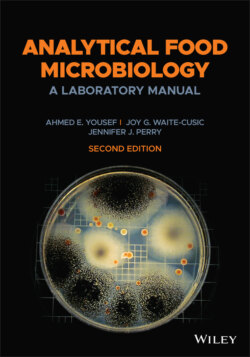Читать книгу Analytical Food Microbiology - Ahmed E. Yousef - Страница 13
Laboratory Environment and Personal Safety
ОглавлениеThere are many facets to the laboratory environment, ranging from tangible items such as fixtures, equipment, supplies, and waste disposal containers to more conceptual aspects such as safety. Laboratory instructors and students should be familiar enough with the laboratory environment to respond appropriately to safety issues and emergencies.
Microbiology laboratory equipment includes basic items such as incubators, refrigerators, water baths, autoclaves, centrifuges, and microscopes, to more contemporary equipment such as gel electrophoresis systems, multiple‐well (or microtiter) plate readers, and polymerase chain reaction (PCR) thermocyclers. Microbiology laboratories often contain biological safety cabinets and chemical fume hoods. A large array of small laboratory tools that are used routinely include pipettes, Bunsen burners, cell spreaders, streaking loops, and thermometers. Supplies and disposable items used in various exercises are also part of the laboratory environment.
Students will be able to complete various laboratory exercises successfully when all required equipment is available and in working order. To this end, a list of required equipment is included with each laboratory exercise in this manual. The students must understand the function of each piece of equipment and how to use it safely and correctly.
Food microbiology involves the study of numerous organisms, including those known to cause human diseases. Therefore, careful work habits are important to prevent the spread of disease to analysts or other workers who may use the laboratory space. Familiarity with the laboratory environment itself and with the procedures required to keep that environment safe and clean is a key component in good microbiology laboratory work.
